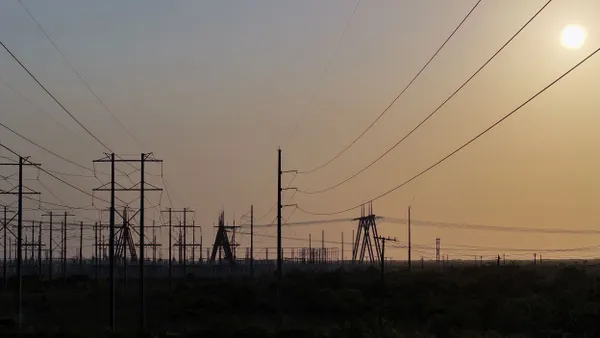Dive Brief:
- The final U.S. Environmental Protection Agency's Clean Power Plan rule was published in the Federal Register this morning, setting off a 90-day period for comments and opening the door for two dozen states to file legal challenges.
- The rule was published in three packages, including the final CPP, standards for modified sources and a proposed federal compliance strategy.
- The rule's publication means states and energy companies who were earlier rebuffed by the legal system for filing premature challenges can now take their case to court. Already, a coalition of 24 states and fossil fuel interests has filed suit to challenge the regulatory package, and separate challenges are expected from other mining and fossil fuel interests in coming weeks.
Dive Insight:
More than two months after final Clean Power Plan plan was announced, the Obama Administration has published the final rule in the Federal Register, formally setting off the public comment period and opening the door to numerous legal challenges.
A coalition of 24 states has teamed up a coal company to challenge the plan, which calls for a nationwide 32% reduction in greenhouse gas emissions by 2030 below 2005 levels. West Virginia Attorney General Patrick Morrisey, who is leading the challenge, said the agency overstepped the regulatory authority granted to it under the Clean Air Act, a landmark clean air package passed first in 1970 and updated in 1990.
“EPA claims to have sweeping power to enact such regulations based on a rarely-used provision of the Clean Air Act but such legal authority simply does not exist,” he said, according to The Hill. The coalition filed its challenge with the U.S. Court of Appeals for the District of Columbia Circuit.
Over the summer, courts twice tossed out a challenge filed by Oklahoma, saying the state would need to wait for the final rule. Observers expect a lengthy legal battle, with the ultimate showdown likely coming before the U.S. Supreme Court. Clues to how the court may evaluate the case, legal scholars told Utility Dive earlier this year, may lie in its decision to remand the agency's Mercury and Air Toxics Standards back to a lower court in June.
Included in the government's publications is the federal strategy for compliance, which the EPA will implement in states that refuse to file compliance plans, or submit inadquate ones. State leaders in Oklahoma, Kentucky, Texas and Wisconsin have said they will refuse to comply with the emissions regulations, and many others are considering similar action, such as requiring any compliance plans to be approved by the state legislature.
EPA acting assistant administrator Janet McCabe told reporters yesterday that the delay between the August announcement of the final targets and the rule being published was standard for a document this size. Publishing the rule was “a routine, standard process," she said, according to Power Magazine.
The comment period ends Jan. 21, 2016.













